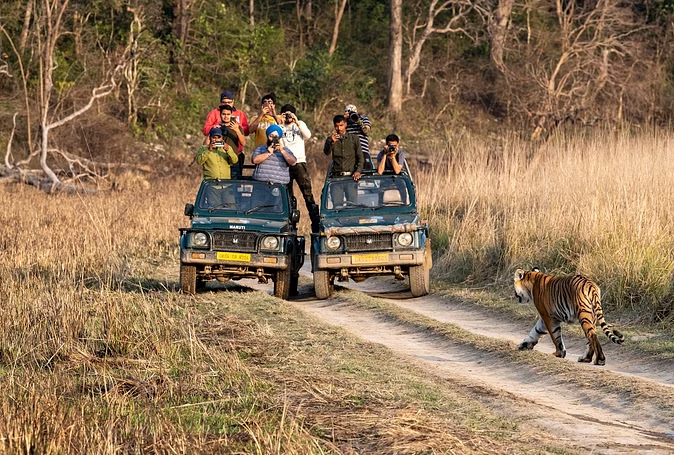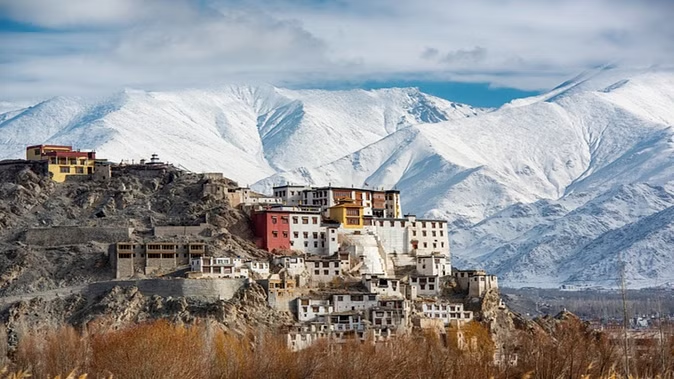Gwalior is a historic city and a major city in the state of Gwalior in the Gwalior district of the Indian state of Madhya Pradesh. Geographically Gwalior M.P. It is located in the north of the state. This city and its famous fort have been the centers of the ancient cities of North India. This city has been the capital of the Gurjara-Pratihara dynasty, Tomar, and Kachwaha. Gwalior has been selected as one of the hundred Indian cities to be developed as a smart city under Prime Minister Narendra Modi's flagship Smart Cities Mission.
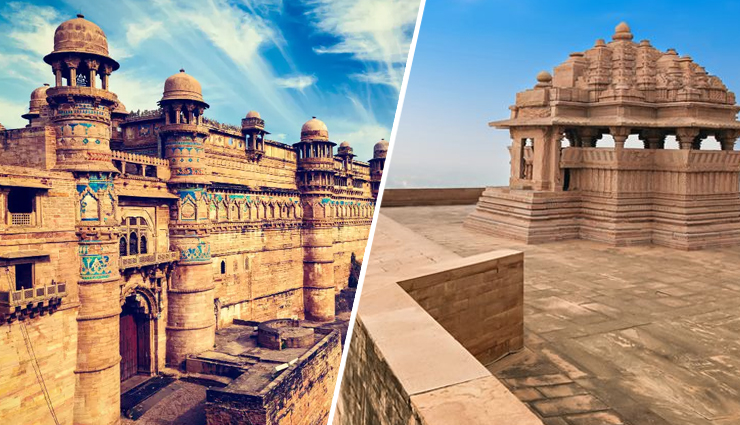
Fort of Maharaja Man Singh (Gwalior Fort)
This sandstone fort is visible from all directions of the city and is the main monument of the city. To reach this fort built on a high plateau, one has to go through a narrow road with a very high ascent. Huge sculptures of Jain Tirthankaras are beautifully and intricately carved on the huge rocks around this road. The height of three hundred feet the fort is the witness of the invincibility of this fort. There are wonderful specimens of medieval architecture in the interior of this fort. Gujri Mahal, built in the 15th century, is one of them, which symbolizes the deep love of Rajput king Mansingh Tomar and Gurjar queen Mrignayani. The exterior of this palace has been preserved in its original form by the Archaeological Department of the state, but the interior has been converted into a museum where rare ancient sculptures have been kept, which according to carbon dating are from the first century AD. These rare sculptures have been obtained from the surrounding areas of Gwalior. Gwalior Fort is situated 120 km away from Agra. It is called the 'Gibraltar of India'.
Teli Ka Mandir
A unique architectural specimen built in the 9th century is the Teli temple of Vishnu ji, which is 100 feet high. It is a unique confluence of Dravidian architecture and Arya architecture.
Manmandir Palace
It was built between 1486 and 1517 by the majestic Raja Mansingh of Gwalior. Decorated with beautiful colored tiles, time has taken away the grandeur of this fort, but in some of its internal and external parts, the remains of excellent artifacts made by these blue, yellow, green, and white tiles still give the address of the grand past of this fort. Apart from being a mighty warrior, Mansingh was also a lover of fine arts and knowledgeable about architectural style. His reign is called the Golden Age of Gwalior. The past still pulsates in the spacious chambers of this fort. There is a music room made of lattice walls, behind which women of the royal family used to enjoy music gatherings and learn music in the Zenana rooms. There is a prison in the basement of this palace, history says that Aurangzeb kept his brother Murad imprisoned here and later got him abolished. Jauhar Kund is also located here. Apart from this, there is a kund in the fort named after the first ruler of this city, Suraj Kund. There is a temple of Lord Vishnu called 'Sahasrabahu Ka Mandir', which is now also known as Saas-Bahu Ka Mandir. Apart from this, there is a beautiful Gurudwara built in memory of Guru Hargobind Ji, the sixth Guru of the Sikhs, who was imprisoned here for two years by Jahangir.
Jai Vilas Palace and Museum
It is not only the current residence of the Scindia royal family but also a grand museum. 35 rooms of this palace have been made a museum. Most of this palace is influenced by Italian architecture. The famous Durbar Hall of this palace is the witness of the grand past of this palace, the weight of the two chandeliers installed here is two tons each, it is said that they were hanged when the strength of the roof was measured by mounting ten elephants on the roof. Another famous item of this museum is the silver train whose rails are fixed on the dining table and this train serves drinks during special feasts. Rare artifacts from Italy, France, China, and many other countries are here.
Tansen Memorial
Tansen was one of India's best musicians and a prominent singer in Akbar's court throughout the Middle Ages. He was also one of the nine pearls of the Mughal court. According to legend, Tansen could summon magic, bring rain and even charm animals with his songs. He learned Hindustani classical music from Mohammad Ghaus, a teacher who was his teacher. He composed the Gwalior Gharana style of music and supported the Dhrupad style. He was buried beside his master in a splendid architectural monument. Every year in November, the Tansen Sangeet Samaroh is held here, in which well-known artists from across the country come to play in various classical performances.
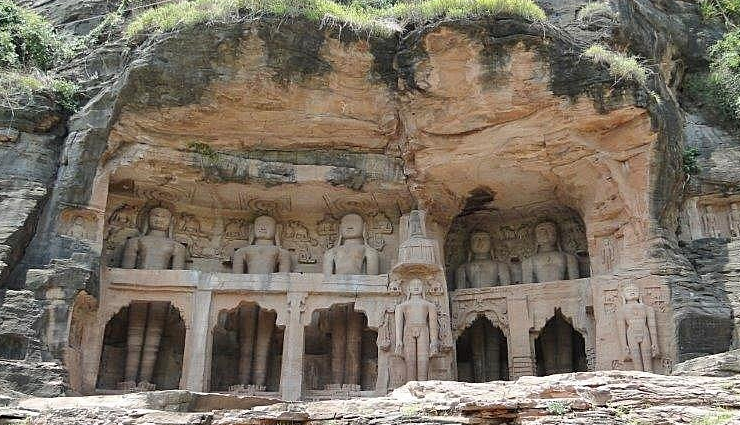
Gopachal mountain
Gopachal Parvat is a unique place of ancient artistic Jain sculpture group, in the area of Gwalior Fort. Thousands of huge di. Jain idols no. 1398 to no. 1536 by carving out the middle mountain. These huge idols were built during the time of Tomarvanshi kings Veeramdev, Dungarsingh, and Kirti Singh. He got fame in the company of Pt. Raidhu, the great poet of Apabhramsh.
Jhansi Maharani Laxmibai Samadhi Sthan
The Rani Lakshmi Bai Memorial is in the Padav area of the city. It is said that here the army of Jhansi's queen Veerangana Maharani Lakshmibai encamped while fighting with the British and sought help from the then ruler Maharaja Jayajirao Shinde alias Scindia, but the rulers who were always under the rule of the Mughals and the British could not help them and She died here on June 17, 1858 at the time of sunset in Phulbagh of Kota's inn. Maharani Lakshmi Bai was secretly cremated in the monastery of Baba Gangadas Maharaj. There was no waste in his last rites, so 745 sadhus took iron from the British and became immortal forever. At the same place, there is a monument of his grand Eshwarudh effigy.
Saas Bahu Temple
The real name of the Saas Bahu Temple located in Gwalior is Sahastrabahu Temple based on Lord Vishnu. However, due to wrong pronunciation over time, this temple has come to be called Saas Bahu Temple. The name of this temple built in the 9th century is one of the famous tourist places of Gwalior. On the other hand, Sahastrabahu Temple is one of the favorite places of tourists due to its magnificent carvings. The temple was built during the reign of King Mahipala of the Kachchhapaghata dynasty, who prayed to Lord Brahma for a prosperous and successful kingdom.
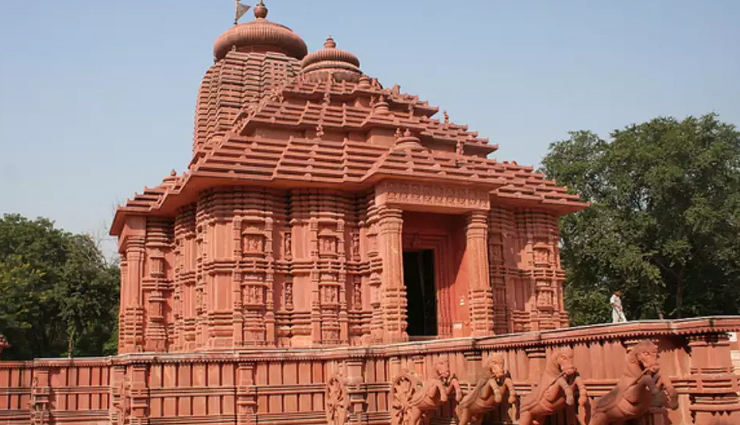
Sun Temple
The Sun Temple here, which is included in the sightseeing places of Gwalior, is dedicated to Lord Surya Dev. The Sun Temple is one of the most spectacular temples in Gwalior as well and the magnificent architecture in this temple takes one by surprise. The Sun Temple was built during the year 1988 by a famous industrialist GD Birla. There are long queues of tourists coming to the Sun Temple throughout the year.
(PC: Lifeberrys)








